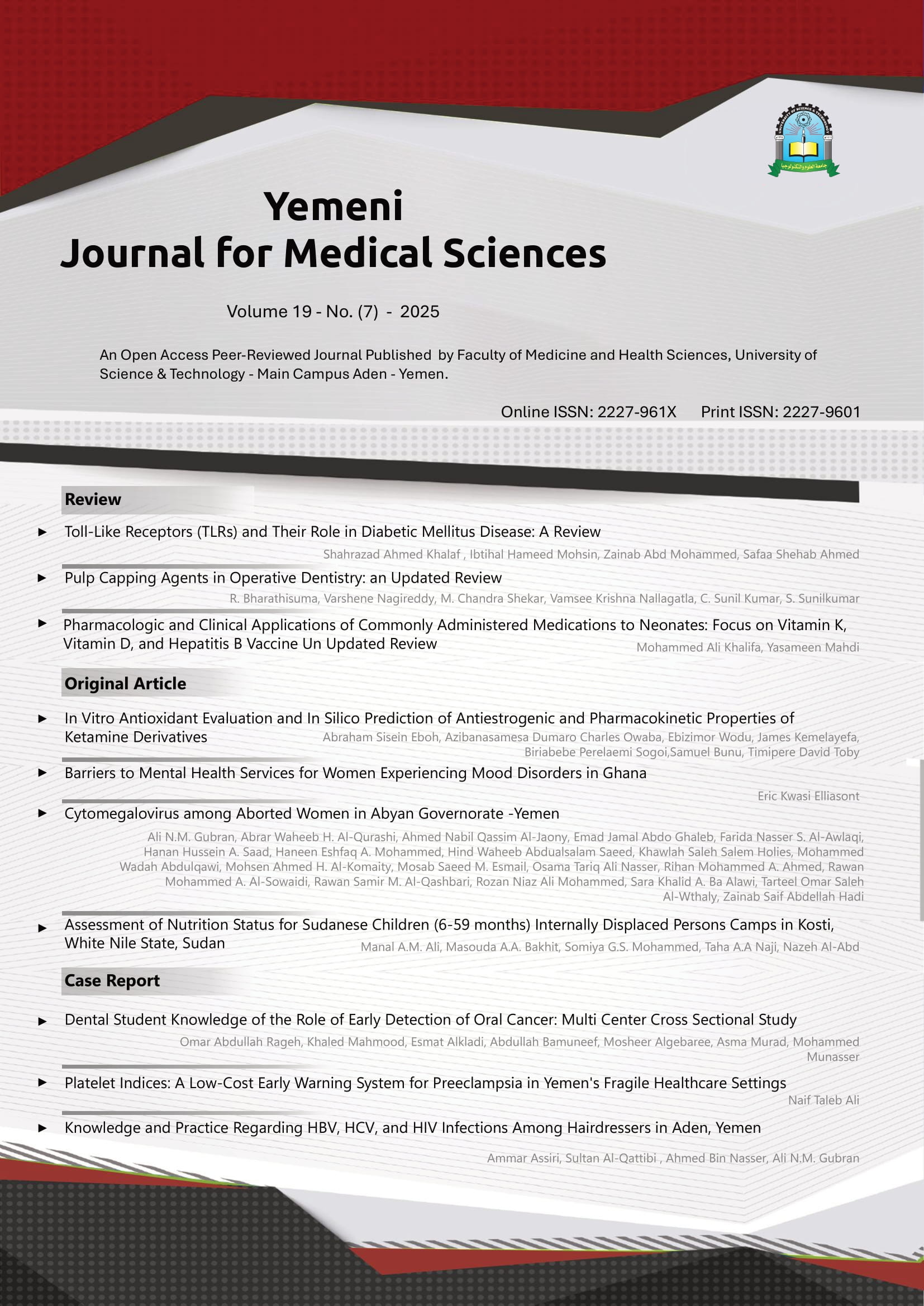Pulp Capping Agents in Operative Dentistry: an Updated Review
##plugins.themes.bootstrap3.article.main##
Abstract
Background: Pulp capping is a restorative technique that helps preserve the tooth pulp after significant injury during cavity preparation, preventing it from degenerating when it was exposed or nearly exposed.
Objective: The aim of this article is to review the literature to assess the current trends and future directions of dental pulp capping materials and it mainly focus on the classification of materials along with their mechanisms.
Methods: A comprehensive search was made to identify relevant previous studies in this area in PubMed and Google Scholar databases.
Results: The procedure of vital pulp capping primarily depends on the ability of dental pulpal tissue to heal. A wide array of materials has been used for pulp capping. Calcium hydroxide and Mineral Trioxide Aggregates (MTA) are the most commonly used pulp capping materials in dentistry, and they have had significant clinical success.
Conclusion: In recent years various other materials like Bone morphogenic protein, Bio dentin, Lasers are also introduced clinically. Further in vitro and in vivo studies are necessary to examine and validate about calcium ion releasing ability, together with the cytotoxic effect and the clinical significance of these next-generation materials.
##plugins.themes.bootstrap3.article.details##
Pulp capping agents, calcium hydroxide, MTA, Biodentine, lasers, and TheraCal

This work is licensed under a Creative Commons Attribution 4.0 International License.
YJMS publishes Open Access articles under the Creative Commons Attribution (CC BY) license. If author(s) submit their manuscript for consideration by YJMS, they agree to have the CC BY license applied to their work, which means that it may be reused in any form provided that the author(s) and the journal are properly cited. Under this license, author(s) also preserve the right of reusing the content of their manuscript provided that they cite the YJMS.








